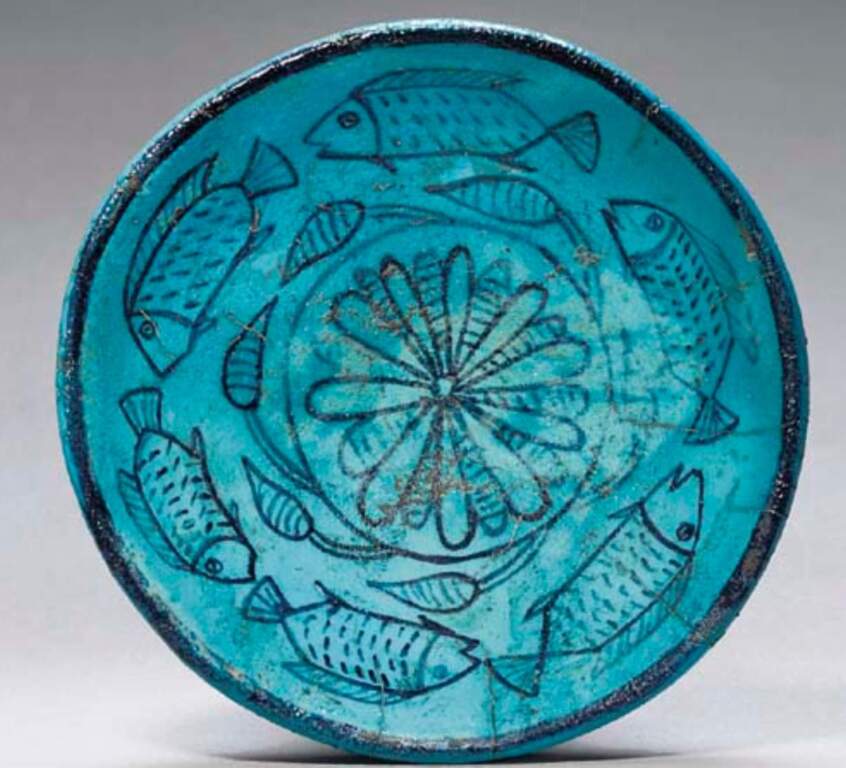Faïence technology, more properly called “Egyptian faïence” to distinguish it from certain tin-glazed pottery made at Faenze in Italy. Although it has been called the first high-technology ceramic. It is a non-clay ceramic whose body is composed of silica in the form of crushed quartz or sand with small amounts of lime (perhaps naturally present in the sand) and alkali, added either as plant ash or natron.
It was difficult to form this material because it lacked clay’s plasticity. For this reason, some shapes were first roughly formed by hand or in molds and then had details “carved” into them by abrasion once dry. In this way, faïence technology shared some features in common with stonework, as well as with the pyrotechnical industries such as glass and metalworking.
The quartz body of the faïence, especially if coated with a still fine layer of brilliant white quartz, was probably preferred above-glazed stone since it gave a bright, sparkling, optical effect, whereas glazed stones such as steatite gave a comparatively dull one. It was coated with a soda-lime-silica glaze that was mostly bright blue in color.
The ancient Egyptians knew the material as, a word derived from “shining” or “dazzling” perhaps in reference to the use of the material to imitate precious stones, such as lapis lazuli or turquoise. The glaze could be produced by several techniques. “The efflorescence technique” involves mixing copper, alkali salts, and plant ashes with body constituents.
The body is then shaped by hand modeling, molding, or wheel throwing. The soluble salts in the mixture gradually effloresce on the surface as the piece dries. Firing fuses this efflorescence to give Faïence its glassy surface. Using this technique, glaze thickness varies significantly and may be poor. It has been suggested that ground copper or other metals, which were added as coloring materials, may have been metallurgy byproducts. A glaze powder was embedded in the artifact as part of the “cementation technique.”.
